I had been following some auctions on eBay for some time to buy a Commodore PET, CBM 8032 (or another similar model) and finally the opportunity arose for a computer that didn't cost too much.

Although the price was already competitive, I made a “delicately” lower offer to the seller, compared to the purchase price.
I am very happy that the seller has accepted the amount I have proposed! On the other hand, apart from paying a lot of transport costs and customs duties, because the package arrived from the United States, it is a bit of a problem to try it. In fact we won't do it today, because the computer works 110 volts 60 hertz.
So I have to find a way to power it, to make this Commodore PET turn on.
Commodore PET, CBM 8032, technical characteristics and specifications
Let's see together the technical specifications of this Commodore PET, CBM 8032. First of all, PET stands for Personal Electronic Transactor.
The CBM 8032 is an 8-bit desktop computer, intended for the business market: it was mainly found in offices. It was developed in the second half of 1979 and produced starting in 1980.

In a single case, we find the monitor, motherboard, power supply and full keyboard. The floppy disk drive and cassette player are external.
The monitor is a 12-inch, monochrome green, 80-column x 25-line CRT, controlled by the MOS 6545 controller.
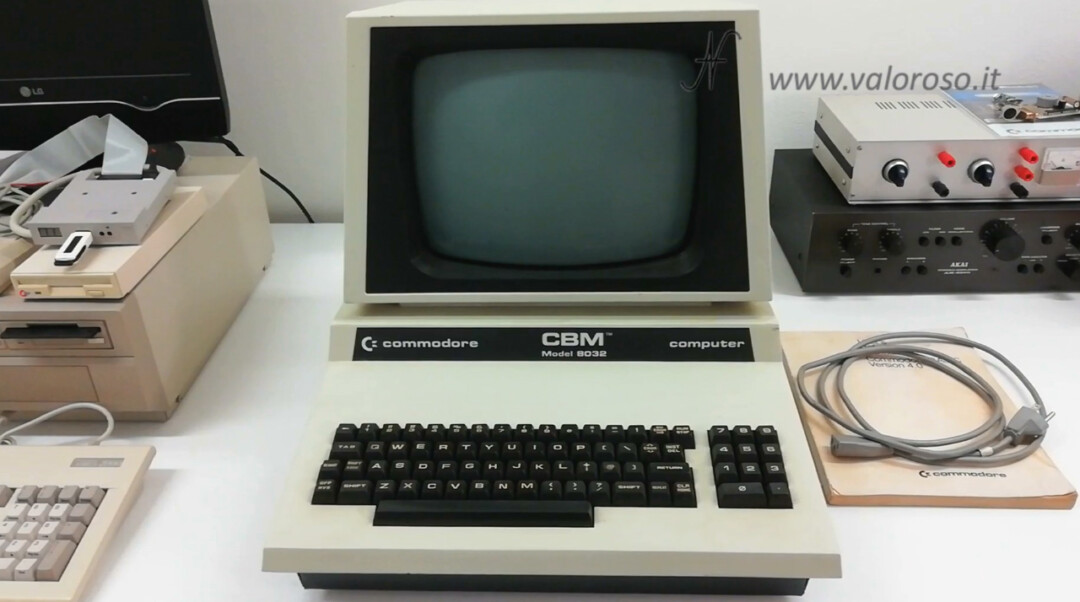
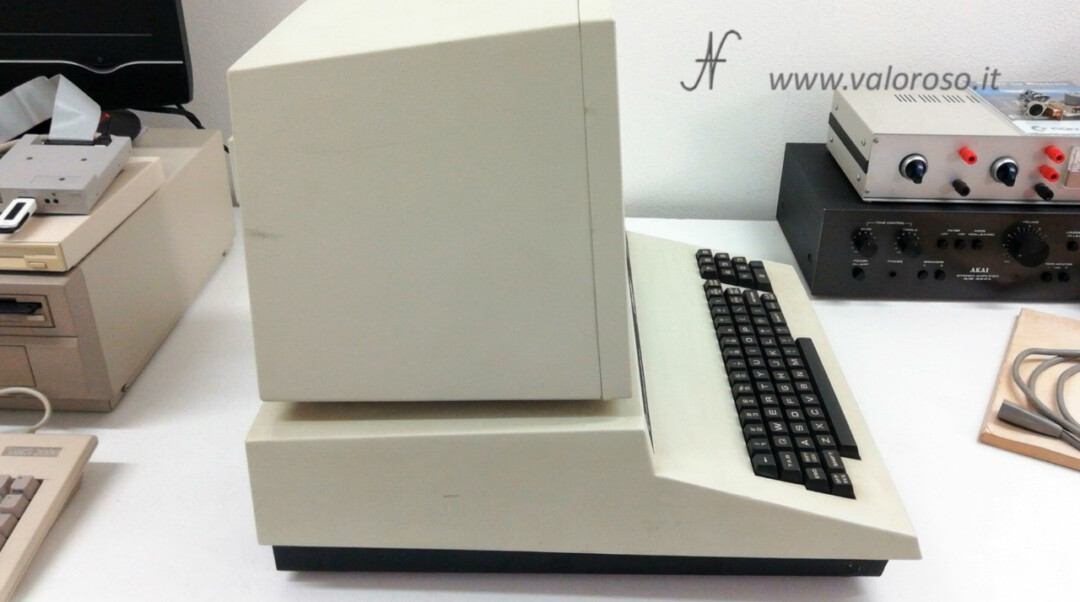
The microprocessor is the MOS 6502: 8-bit and 1 MHz clock frequency.
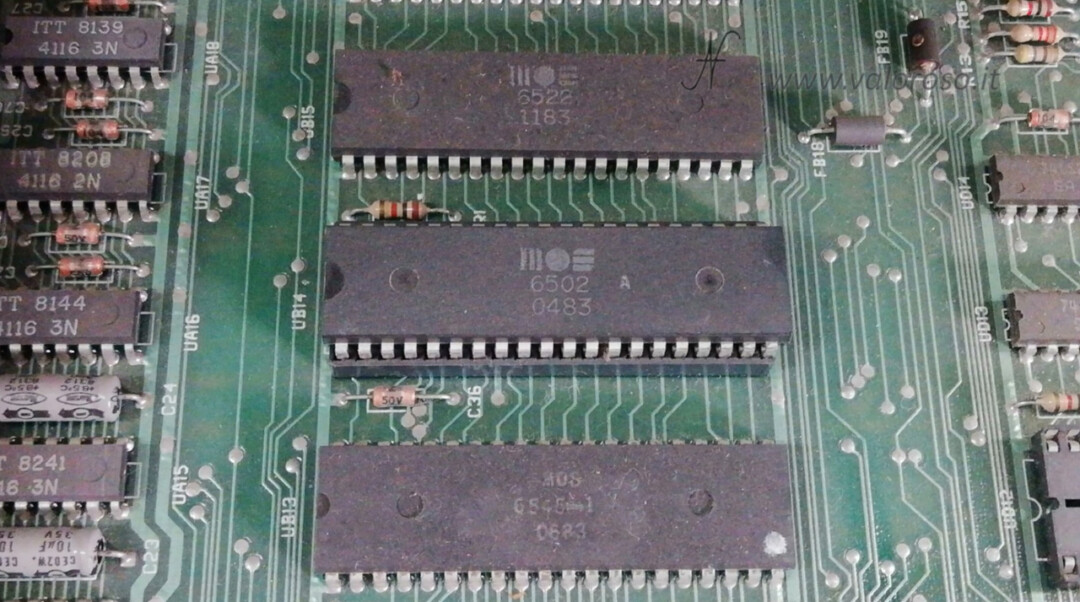
The CBM 8032 is equipped with 32 Kbytes of RAM. From the same series of CBM 8000 computers, there were also others with different RAM sizes.
There is a piezo speaker for the emission of simple sounds.
Regarding the operating system, the Commodore PET starts directly with the Basic V 4.
The CBM 8032 I bought comes from the United States and runs on 110V AC. Of course there are also European Commodore PETs, powered by 220 V.
The absorption is just over 100 watts.
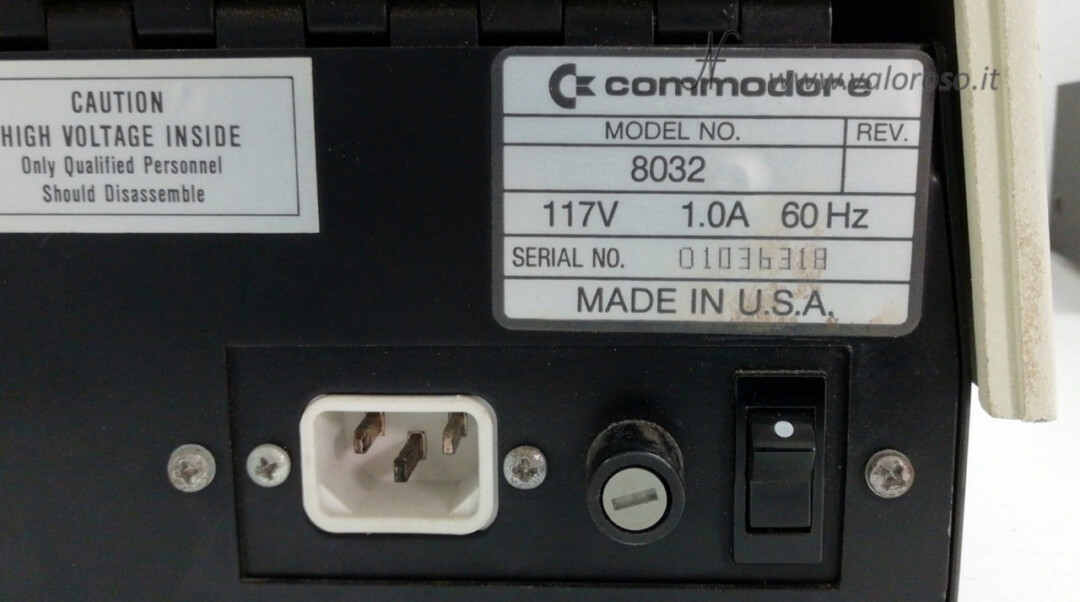
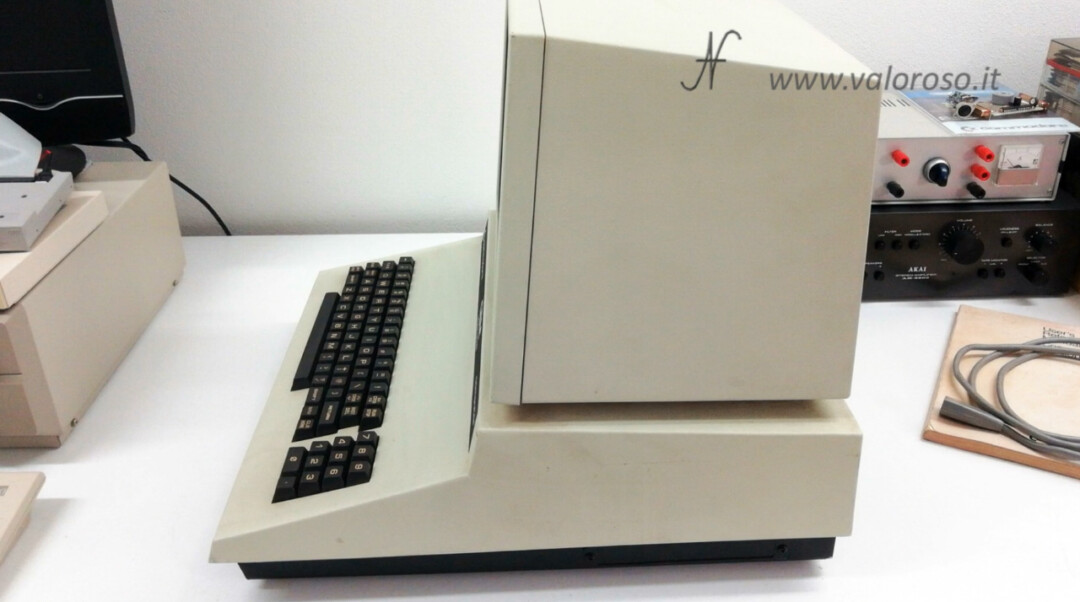
The transport and the package
The commodore PET I bought comes from the United States. I advised the seller to pack it well and luckily it did.
And here you can see, in the package, the Commodore PET CBM 8032!

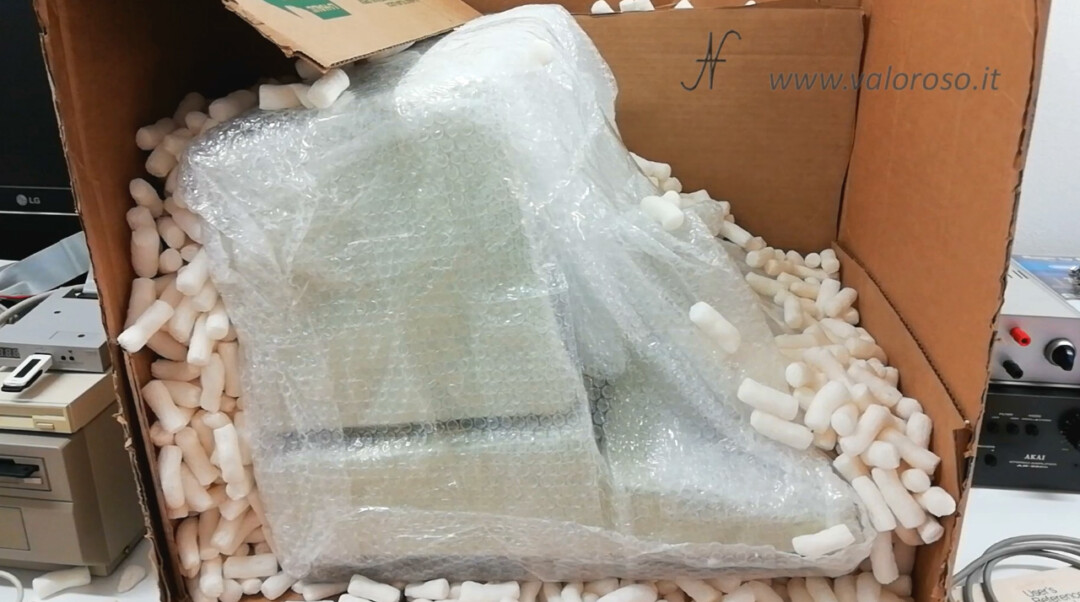
The conditions of the Commodore PET CBM 8032
The condition of the computer is really good! There are some small scratches, but nothing to worry about.
In the back there is a small fold, but I'm sure I will be able to fix it, probably by pushing the panel from the inside. As you can see, the supply voltage is 117 volts, which we commonly refer to as 110V 60Hz. This is the US mains voltage: here in Italy it is 220V 50Hz.
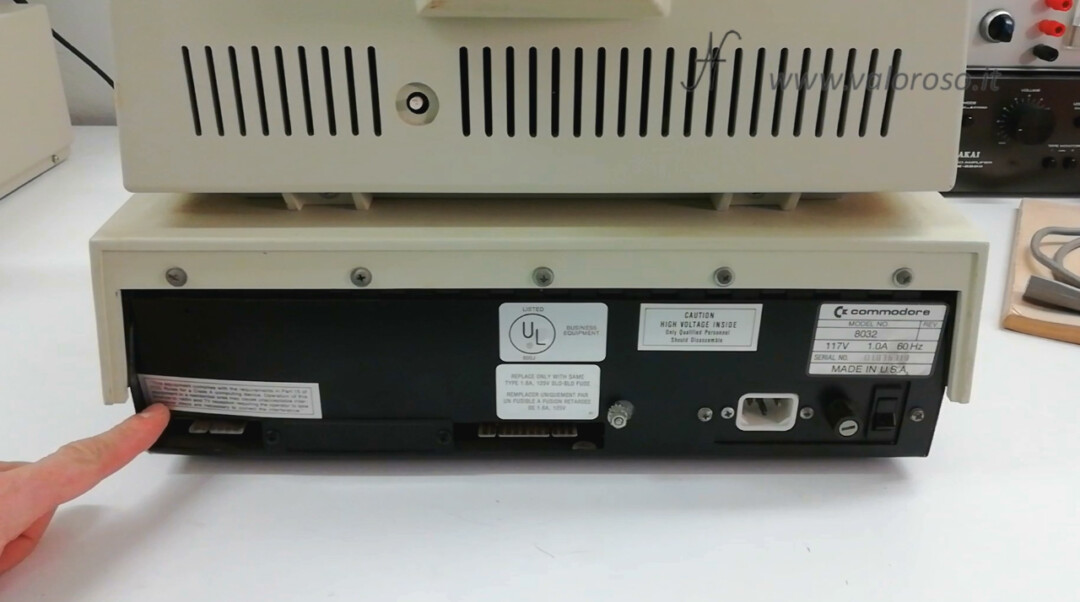
Behind the monitor, there is a piece of scotch tape. There is also another sign of scotch tape, light, above the monitor.
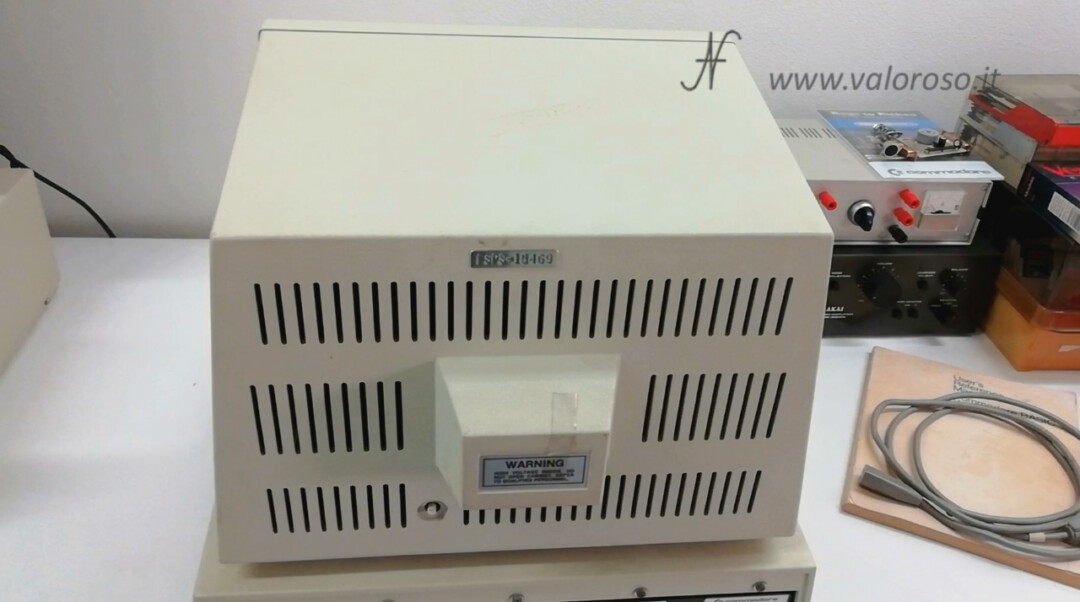
The sound of the keys is spectacular! It is really a satisfaction to press them!
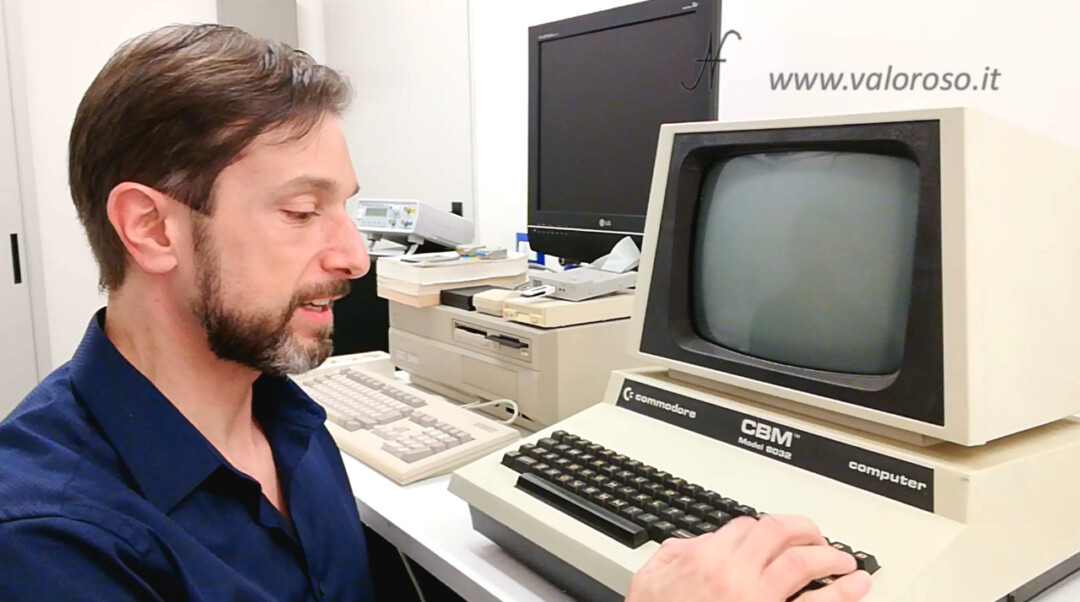
Interior of the Commodore PET, CBM 8032
Let's take a look inside the computer. At the bottom of the computer there are only two screws to unscrew. At the rear, there is a hinge: in fact, nothing must be unscrewed from the rear.
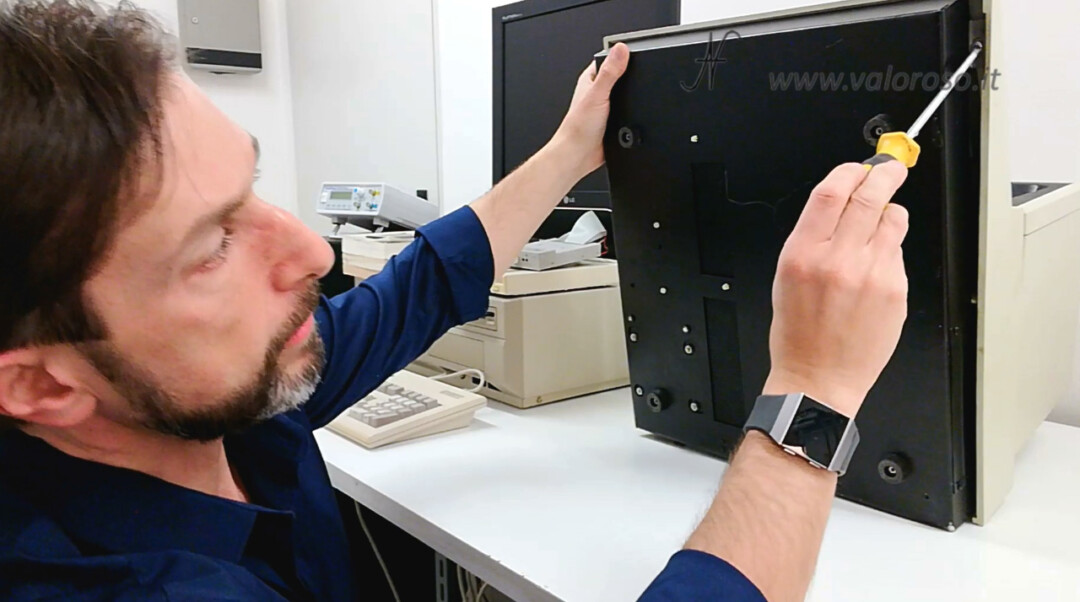
Here: we see the Commodore PET inside: there is the motherboard, the transformer, the level capacitor and, inside the monitor, the CRT and the monitor management card. The keyboard is also located.
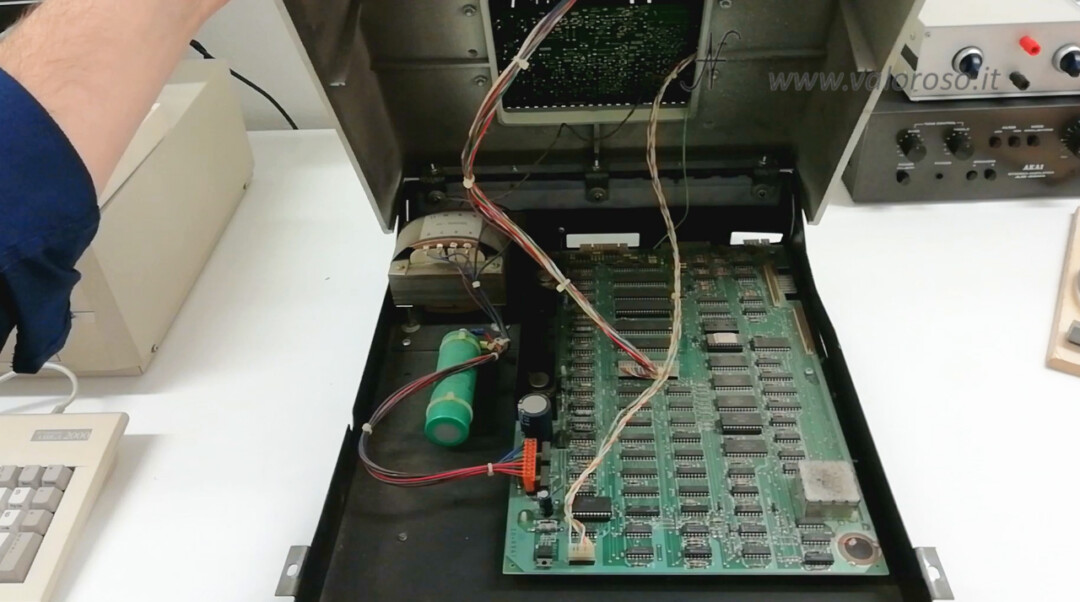
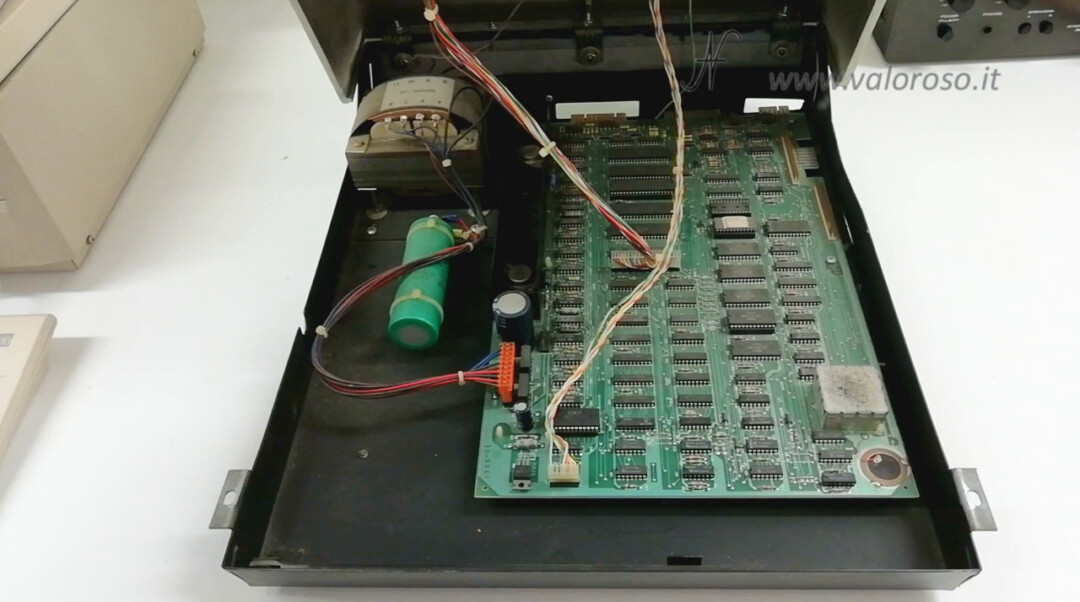
Inside, the computer is also in good condition, although it is a bit dusty.
First experiments to power the Commodore PET at 220V
While the back of the computer is open, we can try to unscrew the transformer. Maybe, fortunately, the primary winding has 2 voltages ...
Behind the transformer there is a third cut strand, red in color. Together with the black and white which, evidently, are connected to the external power socket.
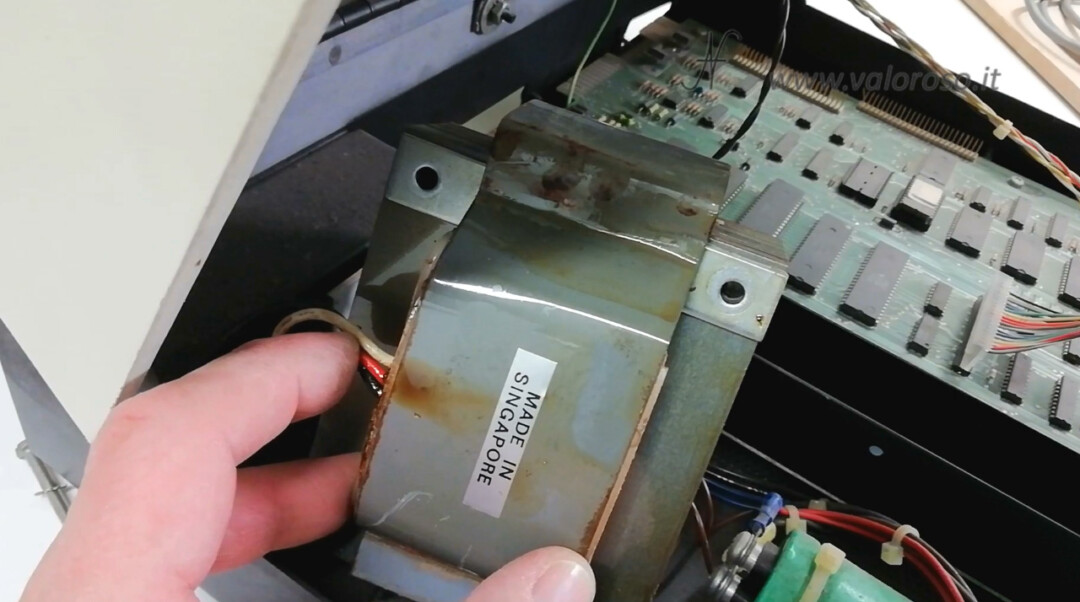
Could this red wire be the 220V socket? It would be great luck!
Let's do a test: let's measure with the tester.
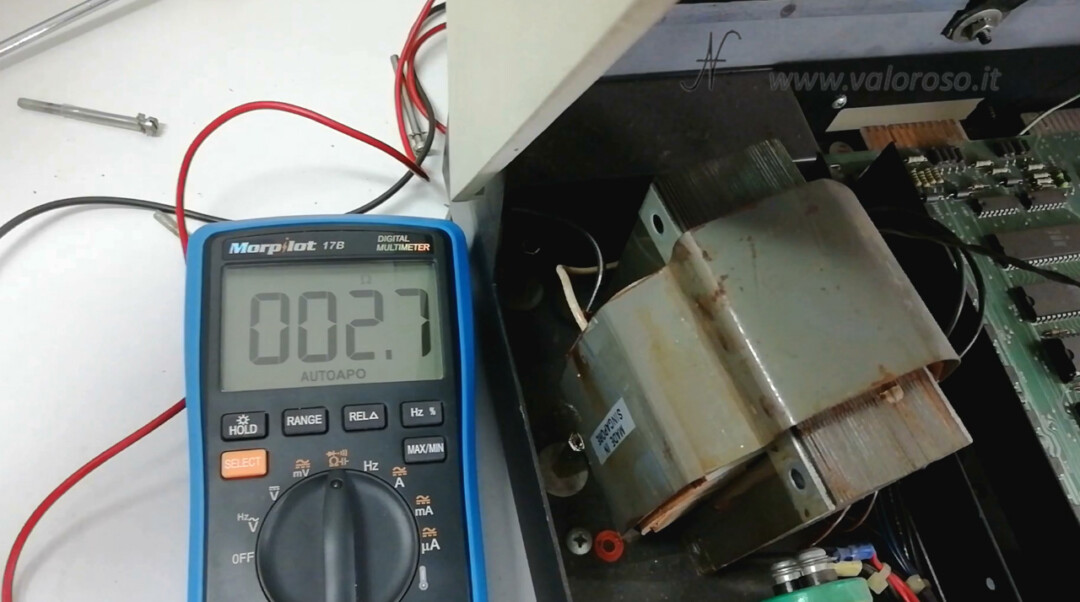
I plugged the tester into the Commodore PET power socket. Turning on the switch, the resistance of the transformer primary measures, in continuous, 2.6 ohms.
By measuring the resistance between a contact of the power socket and the red wire, the tester returns the value of about 1.6 ohms (in direct current).
Unfortunately, we are more or less halfway through the winding. If it had been the 220V socket, we should have expected about double the resistance measured at the power connector, therefore between 5 and 6 ohms.
Instead, finding 1.5 ohms, we can conclude that the red wire is an intermediate socket of the transformer, which unfortunately, is useless to us!
Continues …
When I solve the problem of how to power the computer, I will record another video and write a second article, so you will be able to see how this amazing Commodore PET, CBM 8032 works.
To be notified when I publish more videos related to retro computers and vintage electronics, I invite you to subscribe to the YouTube channel and activate the notification bell!